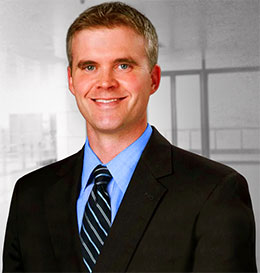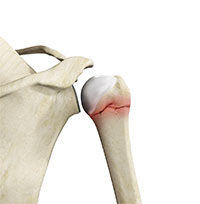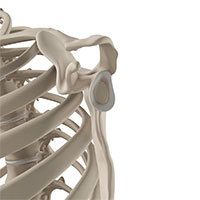
Shoulder Fractures Specialist
Shoulder fractures can occur when your upper arm is directly impacted during a fall, sports, or a traumatic event. Dr. Brody Flanagin is a shoulder fracture specialist in Dallas, Texas. Contact Dr. Flanagin’s team today for an expert diagnosis and treatment of shoulder fractures.


Shoulder Fractures - Sharp Shoulder Pain (Dallas, TX)
About Shoulder Fractures
Shoulder fractures can occur when the upper arm is directly impacted by a sudden event—such as falling down directly on the shoulder area, during a hard blow to the arm during sports, or in a traumatic event such as a car accident. A fracture within the shoulder region can range in severity from a low-grade fracture, to a complete break. In addition, it can affect the shoulder blade (scapula), as well as the upper arm bone, and in some cases, the collarbone (clavicle). A shoulder fracture can be extremely painful and typically needs medical assistance from an orthopedic surgeon so that it heals property.
Dr. Flanagin, offers a variety of treatments for shoulder fractures. Severe fractures or complex cases may require open shoulder fixation/reconstruction or replacement surgery. Dr. Flanagin will order X-rays and the necessary diagnostic exams so that the appropriate course of treatment can be applied for a successful outcome.
Injury Symptoms
When an individual suffers a shoulder fracture, the first symptom is immediate, sharp pain. Swelling will occur quickly and the patient will most likely be unable to move his or her arm. The shoulder may also be visibly changed by way of a bump or disfigurement that can be seen under the skin. Bruising will also likely occur. The symptoms will worsen until the injury is “set” or treated.
Types of Shoulder Fractures
A shoulder fracture can occur anywhere within the shoulder or upper arm region. The most common types of shoulder fractures are:
- Proximal Humerus (“Ball”) Fractures
A proximal humerus fracture is a break that affects the "ball" of the "ball and socket" shoulder joint. This is one of the most common fractures of the shoulder and typically occurs in elderly patients who have osteoporosis after a fall from standing height. These fractures come in many different types and the treatment objective is to allow bone and soft tissue healing in as normal of an anatomical position as possible to minimize pain and maximize function of the arm. Most proximal humerus fractures do not require surgery and are treated with a short period of sling immobilization followed physical therapy. Some displaced fractures require reconstruction with either a plate and screws or shoulder replacement. Oftentimes a CT scan is necessary to better understand the severity of the fracture and guide the treatment decision. The decision for surgery and type of surgery required depends on many factors. These fractures generally require 1 year for maximum recovery.
- Glenoid ("Socket") Fractures
The glenoid is the "socket" of the "ball and socket" shoulder joint. The glenoid is part of the scapula (shoulder blade) which is a thin, broad bone that sits behind the rib cage. The scapula itself is very mobile and normal scapular motion is important for normal shoulder function. The glenoid is a projection of the outer side of the scapula, and unlike the hip socket, is a shallow, almost flat part of the bone. The glenoid surface is covered by cartilage (the smooth lining of normal joints). The socket of the glenoid is deepened by the labrum that surrounds the glenoid and helps provide stability to the shoulder joint to prevent dislocations.
Treatment of glenoid fractures can be controversial as there have been very few studies to compare different treatment methods. Because these are uncommon injuries, it is difficult to perform comparison studies as even specialized surgeons may only treat these types of injuries infrequently. In general, it is agreed that if there is damage to the cartilage surface of the glenoid, then surgery is a reasonable treatment. The goal of surgical treatment is to restore the alignment of the normal joint surface. It is typical to repair the bone with small plates and/or screws to ensure that the bones heal in the proper position. If surgery is performed to realign the damaged bone, the injury to the cartilage increases the chance of the development of arthritis. People who sustain glenoid fractures are more likely to require shoulder replacement surgery later in life.
- Shoulder Blade Fractures
A shoulder blade, or scapula, fracture occurs when the scapula bone is directly impacted, most often through a significant direct impact injury. This particular type of fracture is not as common and the majority of the time does not require surgery and leads to good long-term function.
- Humeral Shaft Fractures
A fracture of the humeral shaft affects the bone of the upper arm. It is the same bone where proximal humerus fractures occur, but these injuries occur lower down between the mid-arm area and elbow. This fracture oftentimes can be treated with a sling or splint, but depending on the severity and amount displacement of the bones of the break, it can also require surgery to set the bone into its proper position with a plate and screws to allow for improved alignment and function.
Shoulder Fracture Treatment
Treatment for a shoulder fracture will depend on the severity of the fracture, as well as the location of the injury. In many cases, hairline fractures and minor breaks can be resolved with time, rest, and a sling. It is important to keep the arm completely immobilized and stable during the recovery process. After a thorough examination, if the injury is severe or it is determined that it cannot heal on its own, fracture repair surgery will need to be performed. This is accomplished either through open repair with hardware or a replacement, depending on the patient’s age and severity of the fracture. Physical therapy will follow after enough time has passed so that the shoulder can regain strength, motion, and mobility.
Heal Your Shoulder Today
Shoulder fractures are injuries that typically require medical attention. Sometimes, acute fracture treatment is needed immediately. During your appointment, we will conduct a thorough physical exam, as well as review the injury via an X-ray or other imaging so that the proper treatment can be prescribed. Please call our orthopedic practice today and schedule your appointment.
*Individual results are not guaranteed and may vary from person to person. Images may contain models.




